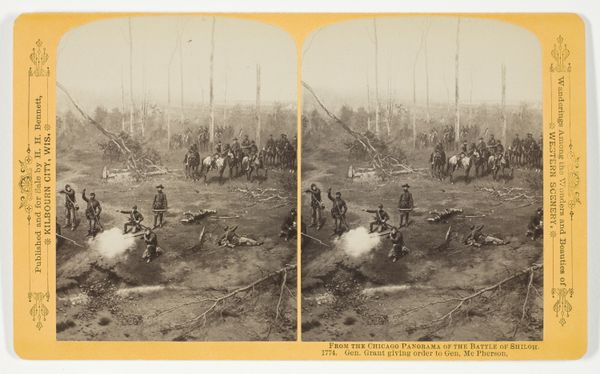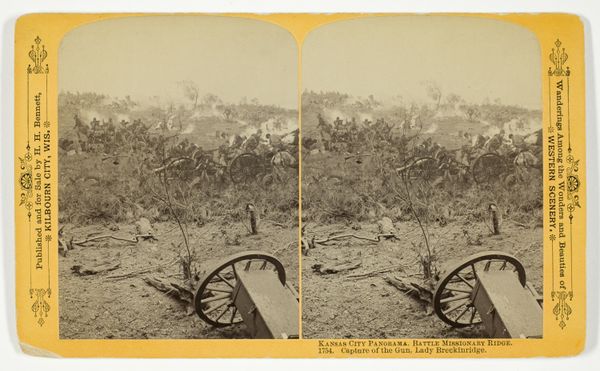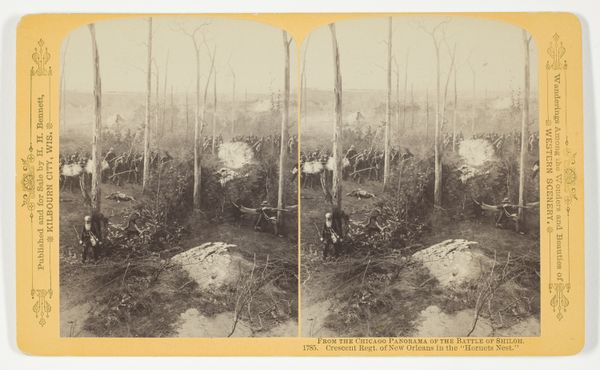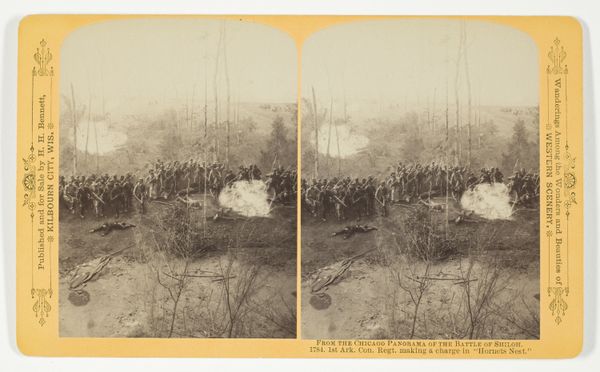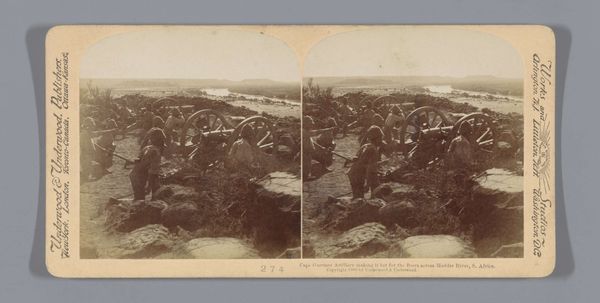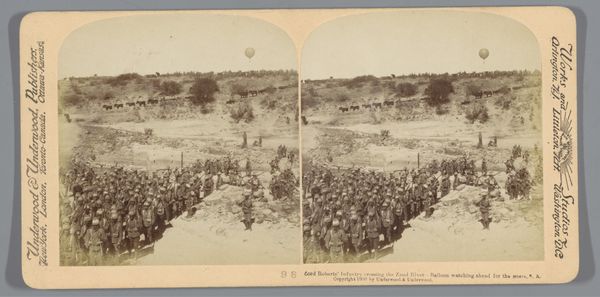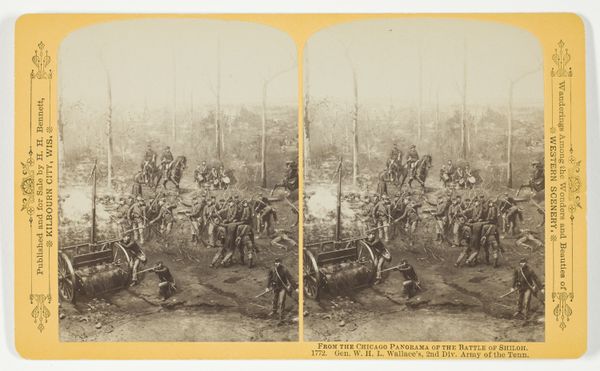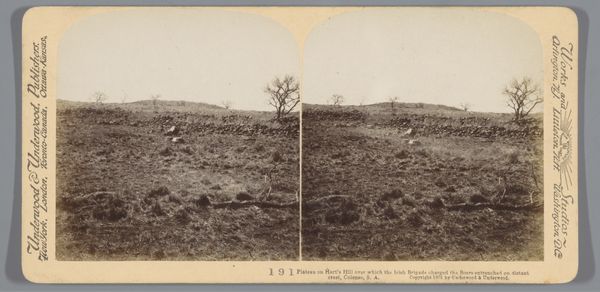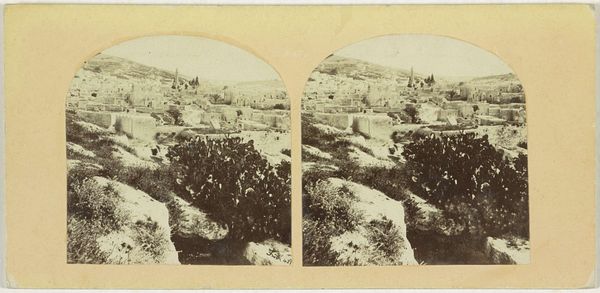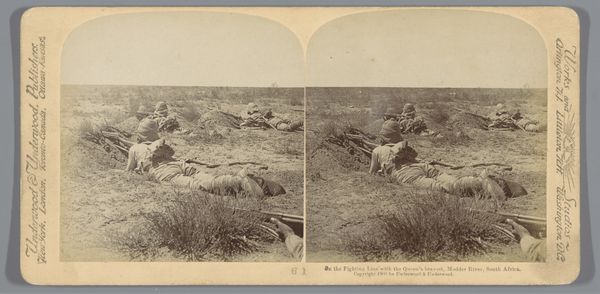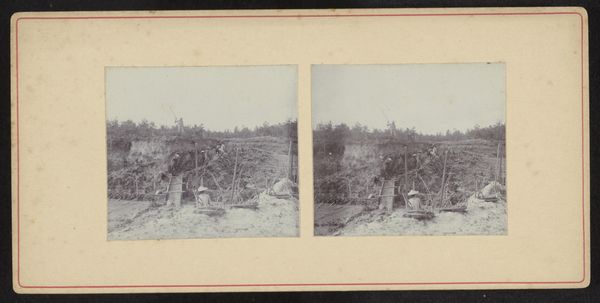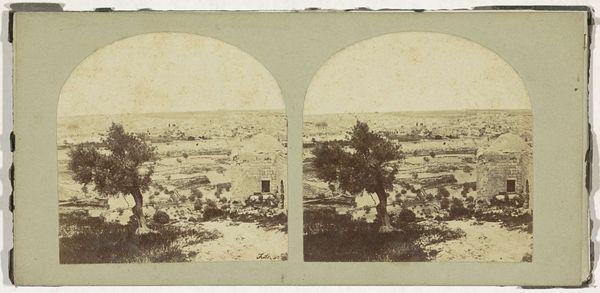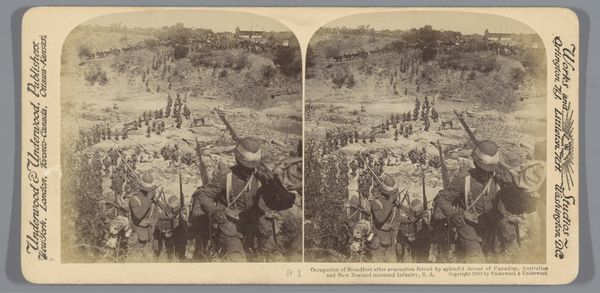
Confederate Gen. Braxton's Bragg's Headquarters 1889
0:00
0:00
print, photography, gelatin-silver-print
#
16_19th-century
# print
#
landscape
#
photography
#
gelatin-silver-print
#
history-painting
#
realism
Dimensions: 10 × 7.5 cm (each image); 10.8 × 17.8 cm (card)
Copyright: Public Domain
Curator: I'm immediately struck by the palpable chaos conveyed in this seemingly still image. Editor: That's precisely the intention. This is "Confederate Gen. Braxton Bragg's Headquarters" created in 1889 by Henry Hamilton Bennett. It is a gelatin-silver print photograph and presents a depiction of the Battle of Missionary Ridge. What interests me here is the physical making of the artwork: a commercially produced print made to be consumed as entertainment or perhaps historical record. Curator: Note the American flag positioned towards the front. Flags of this era signaled ownership, a cultural claim. It almost functions like a brand—establishing, even laying claim to a narrative. What do you think? Editor: That's interesting in light of its photographic nature and mass-market accessibility. This suggests that image, process, and distribution functioned together. Its consumption in that way certainly served specific ideological needs back then and possibly even continues to do so now. Curator: Absolutely. The visual vocabulary reinforces specific understandings. Look how the artist positions the Union flag. How does it operate formally and symbolically? The flag dominates the middle-ground, signifying dominance, ambition, or a push toward perceived justice. Editor: You're highlighting the psychological dimensions and the way visual signs construct meaning. My focus shifts to Bennett’s choice of medium: mass-producible prints, affordable to many. Photography as document, commodified and distributed...it implicates a wider social network in how history is shaped. Curator: Precisely. It speaks to how powerful symbolism is, how embedded into not just artwork but life, and why iconography holds its cultural relevance for sustained periods. I would argue symbols speak to very elemental human conditions: belonging, status, fear, etc. This stereo image really emphasizes how photography can be a material tool for nation building. Editor: These kinds of commercial landscape prints provided Americans visual experiences of the west that shaped ideas about industrial progress and nationhood. Thanks for unpacking some of that potent symbolic dimension of these material pictures.
Comments
No comments
Be the first to comment and join the conversation on the ultimate creative platform.
